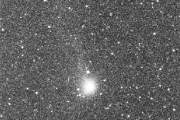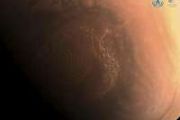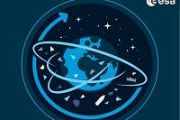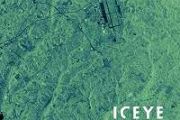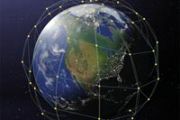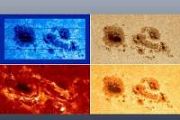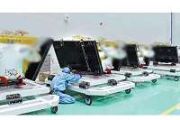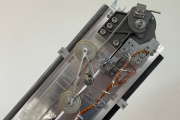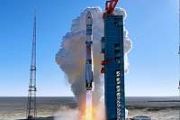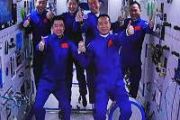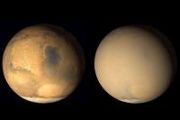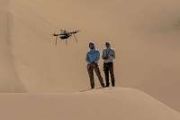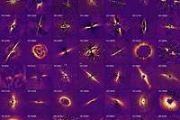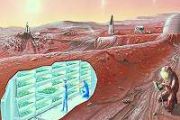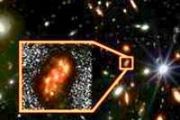
Copernical Team
Earth from Space: Chilean glaciers
 Image:
The changing face of the Chilean glaciers in the Laguna San Rafael National Park is featured in these satellite images from 1987 and 2024.
Image:
The changing face of the Chilean glaciers in the Laguna San Rafael National Park is featured in these satellite images from 1987 and 2024. Two green comets shine bright. How to spot them in the night sky
This request seems a bit unusual, so we need to confirm that you're human. Please press and hold the button until it turns completely green. Thank you for your cooperation!
Press and hold the button
If you believe this is an error, please contact our support team.
185.132.36.159 : e37d757b-79e4-4f15-8446-a2f39f58
A hitchhiker's guide to the galaxy of space immunology
This request seems a bit unusual, so we need to confirm that you're human. Please press and hold the button until it turns completely green. Thank you for your cooperation!
Press and hold the button
If you believe this is an error, please contact our support team.
185.132.36.159 : 4e747c01-73e0-4f8b-b642-6d282c8a
ESA drives growth in Spanish positioning and timing industry with NAVISP

Following a call by the European Space Agency (ESA), nine projects have been selected in close coordination with the Spanish Space Agency (AEE) for funding under ESA’s Navigation Innovation and Support Program (NAVISP). This initiative strengthens Spain’s industrial competitiveness in positioning, navigation and timing (PNT) with the development of new products and services and strengthens the country’s presence in the global space market.
Alexander Gerst during helicopter training
 Image:
Image:
ESA astronauts Alexander Gerst, Matthias Maurer, Samantha Cristoforetti and Thomas Pesquet completed a helicopter training course with the German Bundeswehr, Germany's federal defence forces. They participated in a three-week training programme at the International Helicopter Training Centre in Bückeburg, Germany. The course included one week of simulator instruction followed by two weeks of practical flying in EC135 helicopters, with operations conducted over central Germany and in mountainous terrain in the German Alps.
Helicopter training offers a realistic analogue for the dynamics of planetary landings, requiring capabilities such as vertical take-off and landing, terrain-based decision-making, and high levels of coordination and
Samantha Cristoforetti during helicopter training
 Image:
Image:
ESA astronauts Alexander Gerst, Matthias Maurer, Samantha Cristoforetti and Thomas Pesquet completed a helicopter training course with the German Bundeswehr, Germany's federal defence forces. They participated in a three-week training programme at the International Helicopter Training Centre in Bückeburg, Germany. The course included one week of simulator instruction followed by two weeks of practical flying in EC135 helicopters, with operations conducted over central Germany and in mountainous terrain in the German Alps.
Helicopter training offers a realistic analogue for the dynamics of planetary landings, requiring capabilities such as vertical take-off and landing, terrain-based decision-making, and high levels of coordination and
Thomas Pesquet during helicopter training
 Image:
Image:
ESA astronauts Alexander Gerst, Matthias Maurer, Samantha Cristoforetti and Thomas Pesquet completed a helicopter training course with the German Bundeswehr, Germany's federal defence forces. They participated in a three-week training programme at the International Helicopter Training Centre in Bückeburg, Germany. The course included one week of simulator instruction followed by two weeks of practical flying in EC135 helicopters, with operations conducted over central Germany and in mountainous terrain in the German Alps.
Helicopter training offers a realistic analogue for the dynamics of planetary landings, requiring capabilities such as vertical take-off and landing, terrain-based decision-making, and high levels of coordination and
Matthias Maurer during helicopter training
 Image:
Image:
ESA astronauts Alexander Gerst, Matthias Maurer, Samantha Cristoforetti and Thomas Pesquet completed a helicopter training course with the German Bundeswehr, Germany's federal defence forces. They participated in a three-week training programme at the International Helicopter Training Centre in Bückeburg, Germany. The course included one week of simulator instruction followed by two weeks of practical flying in EC135 helicopters, with operations conducted over central Germany and in mountainous terrain in the German Alps.
Helicopter training offers a realistic analogue for the dynamics of planetary landings, requiring capabilities such as vertical take-off and landing, terrain-based decision-making, and high levels of coordination and
ESA astronauts complete helicopter training in preparation for future lunar missions
 Image:
Image:
ESA astronauts Alexander Gerst, Matthias Maurer, Samantha Cristoforetti and Thomas Pesquet completed a helicopter training course with the German Bundeswehr, Germany's federal defence forces. They participated in a three-week training programme at the International Helicopter Training Centre in Bückeburg, Germany. The course included one week of simulator instruction followed by two weeks of practical flying in EC135 helicopters, with operations conducted over central Germany and in mountainous terrain in the German Alps.
Helicopter training offers a realistic analogue for the dynamics of planetary landings, requiring capabilities such as vertical take-off and landing, terrain-based decision-making, and high levels of coordination and
Spain celebrates ESA heritage with substantial plans for the future

The European Space Agency's presence in Spain is set to be strengthened, while more than a dozen contracts with Spanish industry were signed on Thursday.



